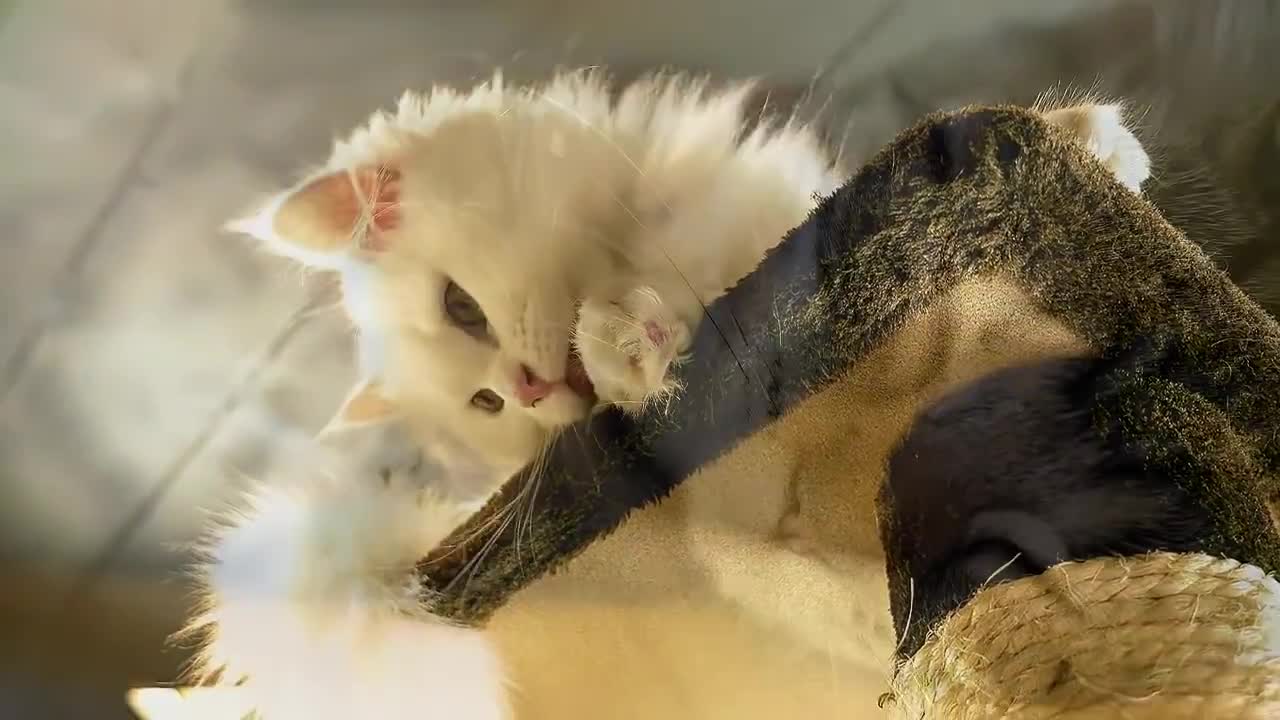Premium Only Content

Chats 101: Conseils d'entraînement de base sur les chats
The cat is a very independent animal and many cat owners will tell you that it is this independence that makes the cat such a comfortable companion around the house. Cats do not require as much attention as dogs. And, unlike dogs, most cats make no special effort to win your approval, often waiting for you to come to them rather than running for your attention.
All this means that the cat is a very easy-going, polite and self-controlled creature. But that also means it can be difficult to train a cat. If you and your cat disagree on a certain type of behavior, you may find it difficult to get him to do things your way. However, don't lose hope, it's not entirely impossible to change your cat's behavior.
The very first training you'll probably want to give your cat will be how to use the litter box, for very obvious reasons.
Can a cat be trained? The answer is a “Yes!” Resounding, but it has to be done in catlike terms. Everything in this video is designed to help you see the world from your cat's perspective, which is an important key to training. You can train a cat to jump through hoops or turn around on command. However, a more valuable training goal is to teach him to stay within the bounds of acceptable behavior in society.
Litter training.
Training a cat to use a litter box is usually not difficult. Cats are generally clean by nature and have a natural tendency to bury their waste. Follow these steps to teach your cat to start using a litter box.
Place your cat and a clean litter box, the kind without a cover, in a confined space, such as a room in your home. Make sure your cat has enough food and clean water. If your cat "falls out" of the box, place the waste in the litter box.
Usually within a day or two of being confined to the litter box, the cat will start using it regularly. If the cat doesn't use the box in a few days, try this. After the cat has eaten, place it in the litter box, then scrape the surface of the litter box a little with your finger.
If it still doesn't, make sure the box is clean. If it has been used before, clean it with baking soda and fill it with clean litter. You can also try several types of litter, sometimes a cat will be fine with one brand and show up at another brand. Also, make sure the box is located in a quiet, secluded location.
If nothing seems to work, consult your veterinarian. Sometimes an underlying medical issue can be the cause of a cat's reluctance to use a litter box.
Finish scratches on furniture.
Scratching furniture is a natural feline behavior. They scratch to condition their claws, for exercise, to mark their territory, and just because it's fun. Remember that yelling or hitting doesn't work. Try these tips instead.
Trim your cat's claws and redirect the energy to a scratching post or cardboard notepad. Praise your cat and give her a treat every time you see her using the scratching post. Make your upholstered furniture less attractive by applying double-sided tape or spraying cat repellent around the area where your cat is scratching.
Behavioral training.
If your cat is doing things that you really would rather it not do, chances are you could be training that bad behavior. But first, try to figure out why the cat is behaving this way. There's a reason, and from the cat's perspective, of course, the behavior is perfectly reasonable.
If the cat scratches your furniture, for example, it is driven by instinct to do so. He needs to scratch something, it's a survival instinct. It's not necessarily your furniture, but something. So there is not much chance that your cat will stop scratching. But you can train the cat to focus its claw instinct on acceptable objects, like scratching posts.
Train your cat to behave appropriately using positive reinforcement, not punishment. Don't hit the cat when it scratches the furniture.
Cat post for cat.
Spend time near the post encouraging your cat to interact with it. Play with the cat near the post and incorporate it into your play. The most important step is to reward the cat each time your cat uses the post. Have delicious treats nearby and give one to the cat whenever you
-
 LIVE
LIVE
Jim Jordan
38 minutes agoEurope’s Threat to American Speech and Innovation
557 watching -
 LIVE
LIVE
Randi Hipper
44 minutes agoBITCOIN HOLDS CRITICAL LEVEL! NEXT MOVE DETERMINES EVERYTHING
54 watching -
 LIVE
LIVE
The Pete Santilli Show
11 hours agoMORNING STREAM Wednesday September 3, 2025 ▐ THE PETE SANTILLI SHOW & SANTILLI REPORT 9/2
209 watching -
 LIVE
LIVE
Dear America
2 hours agoNational Guard To Chicago!!! 33k Epstein Files Released!! + Did Trump Threaten China?!
2,948 watching -
 LIVE
LIVE
Matt Kohrs
10 hours agoStock Market Open: Bounce or Bust?! || The Best Live Trading Show
586 watching -
 LIVE
LIVE
Wendy Bell Radio
5 hours agoHello And Good Night
7,634 watching -
 LIVE
LIVE
LFA TV
3 hours agoLFA TV ALL DAY STREAM - WEDNESDAY 9/3/25
4,718 watching -
 1:23:53
1:23:53
JULIE GREEN MINISTRIES
3 hours agoLIVE WITH JULIE
78.2K145 -
 18:23
18:23
Producer Michael
21 hours agoWHAT REALLY HAPPENED IN DUBAI!
50.3K6 -
 6:32
6:32
Blackstone Griddles
15 hours agoCajun Smashburgers with Bruce Mitchell | Blackstone Griddles
17.5K9